FRANCISCO BENITEZ
“I can say without a doubt that Natural Pigments contributed to my painting with that beautiful medium [oil] again, after several years of having abandoned it. The sheer beauty and purity of the pigments, and the fact that historical pigments were available in their original form, was a significant factor in returning to the practice.”
ABOUT THE ARTIST
Francisco Benítez was raised in New Mexico, New York, and Spain. His mother, a flamenco dancer and choreographer, and his father, a Spanish set designer, influenced his subsequent interest in tenebrist painting and baroque art. Benítez studied Classics at St. John’s College, then academic painting techniques and anatomy/figure drawing at the Art Student’s League in New York City. Benítez obtained his Bachelor of Fine Arts degree from the University of New Mexico, during which time he studied abroad at the Facultad de Bellas Artes in Granada, Spain, through an exchange program, and later did graduate-level independent study.
Benítez lived in Southern France for over four years, during which he participated in a number of museum shows. At present, Benítez divides his time between Europe and Santa Fe. His active exhibition schedule in the US is enhanced by projects inFrance, Italy, and Spain. He also participated in Imperium, curated by Dr. Thomas Noble Howe and Edward Lucie-Smith in 2010, at Southwestern University, Texas.
In 2014 he developed the “Doña Inés Lost Her Slipper” project, for which he ran a successful Kickstarter campaign. The show was featured at the SFCC Visual Art Gallery (Santa Fe) in the fall of 2014, and got much critical attention. It then traveled in 2015 to the Palazzo Nicolaci, in Noto, Italy—a living 18th century museum, followed by the Muséé d’Art et d’Histoire in Bormes, France. It has traveled to the Real Jardin Botanico in Madrid, next to the Prado, until September, 2018.
FRANCISCO BENITEZ
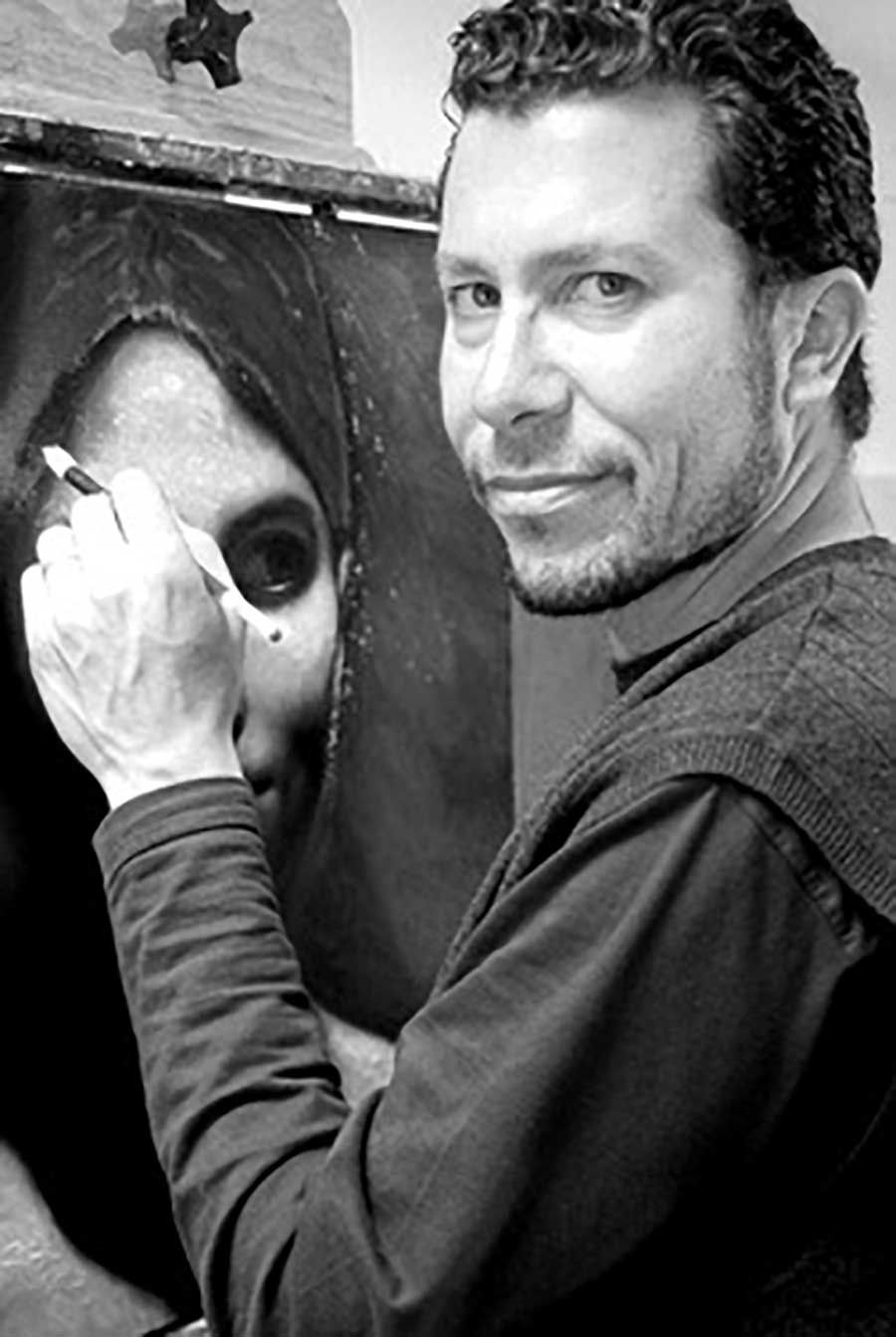
ARTIST STATEMENT
I am a Santa Fe-based artist of Latino background who has developed a career exhibiting both in the US and Europe. Being exposed to theater as a child and to the sensibilities of my Spanish father, I began painting by emulating the Spanish masters. I later discovered Caravaggio--my first body of paintings had distinct tenebrist sensibilities, which highlighted the luminosity of the flesh and psychology of the characters in theater-like settings.
I then became fascinated with the Fayum portraits, and for a number of years did a great deal of research on the ancient methods of the Greek and Egyptian painters. I learned how to use the heated and cold wax wax techniques of encaustic to paint portraits. I then created various bodies of work centered on contemporary portraits of people using an ancient method and approach.
I lately developed a project called, “Doña Inés Lost Her Slipper”, which was inspired my own family history of growing up in a multi-ethnic household of Europeans and Native Americans.
The main themes in my work are a focus on the recuperation of Old Master techniques and approaches, with a heightened awareness of contemporary art. I enjoy juxtaposing art styles from various periods to highlight the political contexts, gender roles, and psychological realities of the various human subjects I paint. I use historical pigments and materials to excavate the past, and make statements about our own place in history at this time of upheaval and inexorable change.
FRANCISCO ON RUBLEV COLOURS
For oil paint, I can say without a doubt that Natural Pigments contributed to my painting with that beautiful medium again, after several years of having abandoned it. The sheer beauty and purity of the pigments, and the fact that historical pigments were available in their original form, was a significant factor in returning to the practice. For years I also had been seeking a more archival but less toxic and smelly alternative to the Maroger medium, and Oleogel fit the bill perfectly. It had all the thixotropic qualities of the Maroger, without the smell, and with a greater window of time in which to work. And it was technically sound and archival. I came to discover several of the other mediums like the Velazquez Medium, the Venetian Medium, and Wilson’s Medium. I would use them all depending on what subjects or size of painting I was tackling.
I enjoy making a medium with walnut oil and either the Walnut Stand Oil or the Vacuum-Bodied Oil Medium Viscosity. Both stand oil types enhance the viscous quality of the paint and create beautiful drag.
I was especially impressed with Natural Pigment’s project to restore Flake White to the contemporary palette. I was seduced by the “long” qualities of Lead White #2, and the new Stack Process Flake White. I had the privilege of seeing the lead coils in George and Tania’s corrosion shed. These whites are unlike any other, as they have a subtlety and refinement one finds in the delicate tints in paintings of the Louvre, Met, or Prado.
Other gorgeous and otherwise unavailable paints are the Lead-Tin Yellow, Vermillion, and Naples Yellow. I currently use the range of colors which is part of the De Piles palette, which consist of:
FRANCISCO ON CERACOLORS
Natural Pigments totally transformed my relationship with oil painting and cold wax encaustic. I had not worked with oils for a number of years as I was very focused on rediscovering the ancient techniques of encaustic painting, as it was practiced in Greece 2,500 years ago. I had consulted with specialists like Euphrosyne Doxiadis and others, about the materials and methods of such techniques. I had been very curious about the cold wax method, practiced in many of the Fayum portraits, called « Punic wax ». I was elated that George O’Hanlon was willing to make his own formulation of it for contemporary artists. It provides a fascinating window into the possibilities available to ancient artists, which had not been to contemporary artists. It has become a part of my working method with encaustics, as it is not bound by the limitations of the hot wax medium.
Ceracolors have the incredible advantage that they can be used as cold water-based paints, similar to acrylics but infinitely more beautiful; but after they air dry, a heating element can be introduced whereby they are given an extended life by becoming liquid again, and can be worked indefinitely. They are hybrid paints which cannot be easily categorized, which makes them ideally suited to the challenging demands of contemporary painting. They can be used for diluted washes resembling oil sketches with mineral spirits, or heavily impastoed encaustic paintings resembling the ancient Fayum portraits.
For most of my cold wax painting, I use the four-color palette of the ancients, namely:
FRANCISCO BENITEZ CERACOLORS PALETTE

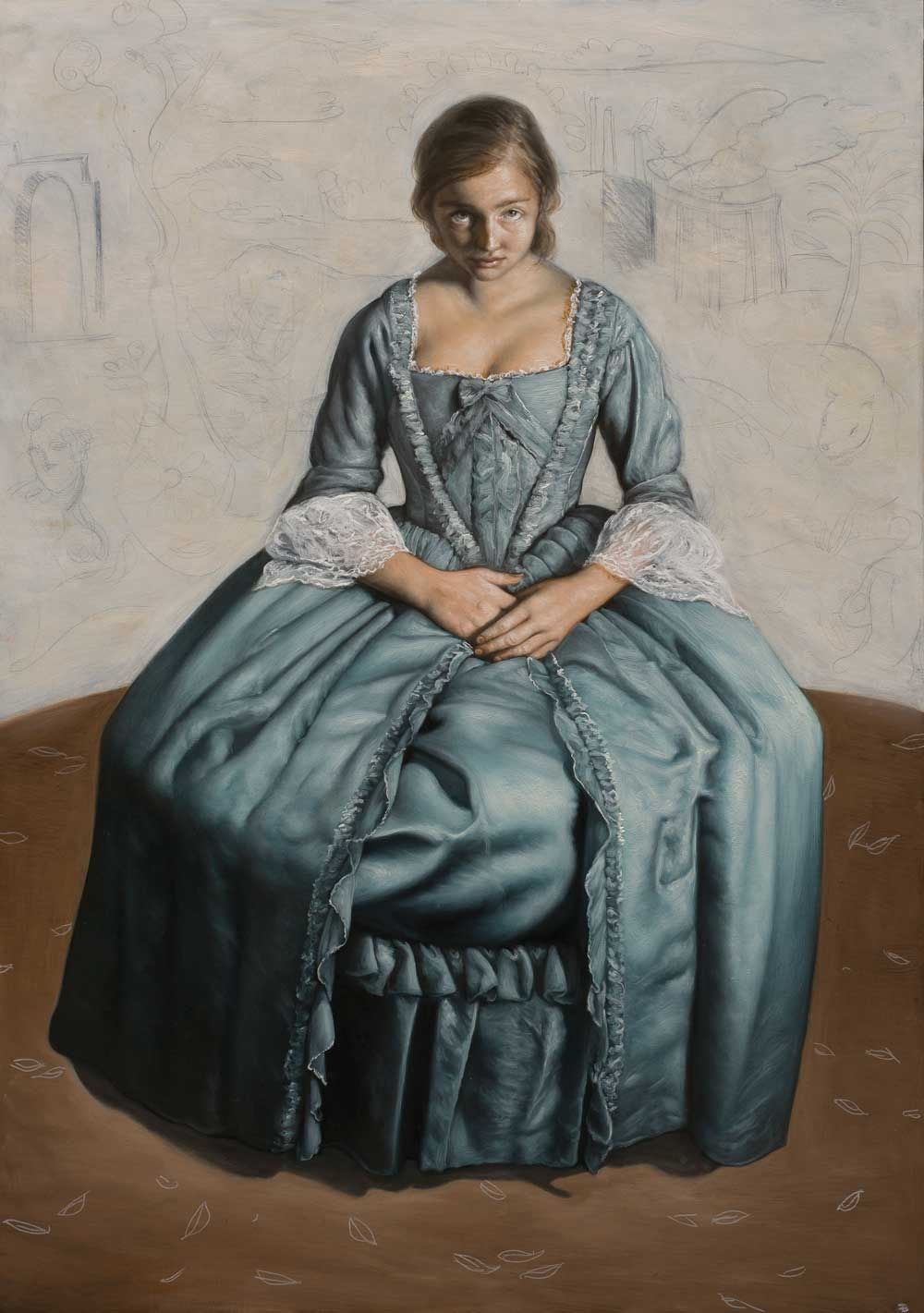
La Comtesse, oil on canvas, 54 x 38 (De Piles palette with Blue Verditer pigment in linseed oil)

The Geographer, oil on masonite, 36 x 30 (De Piles palette with Violet Mars Red for the drapery)
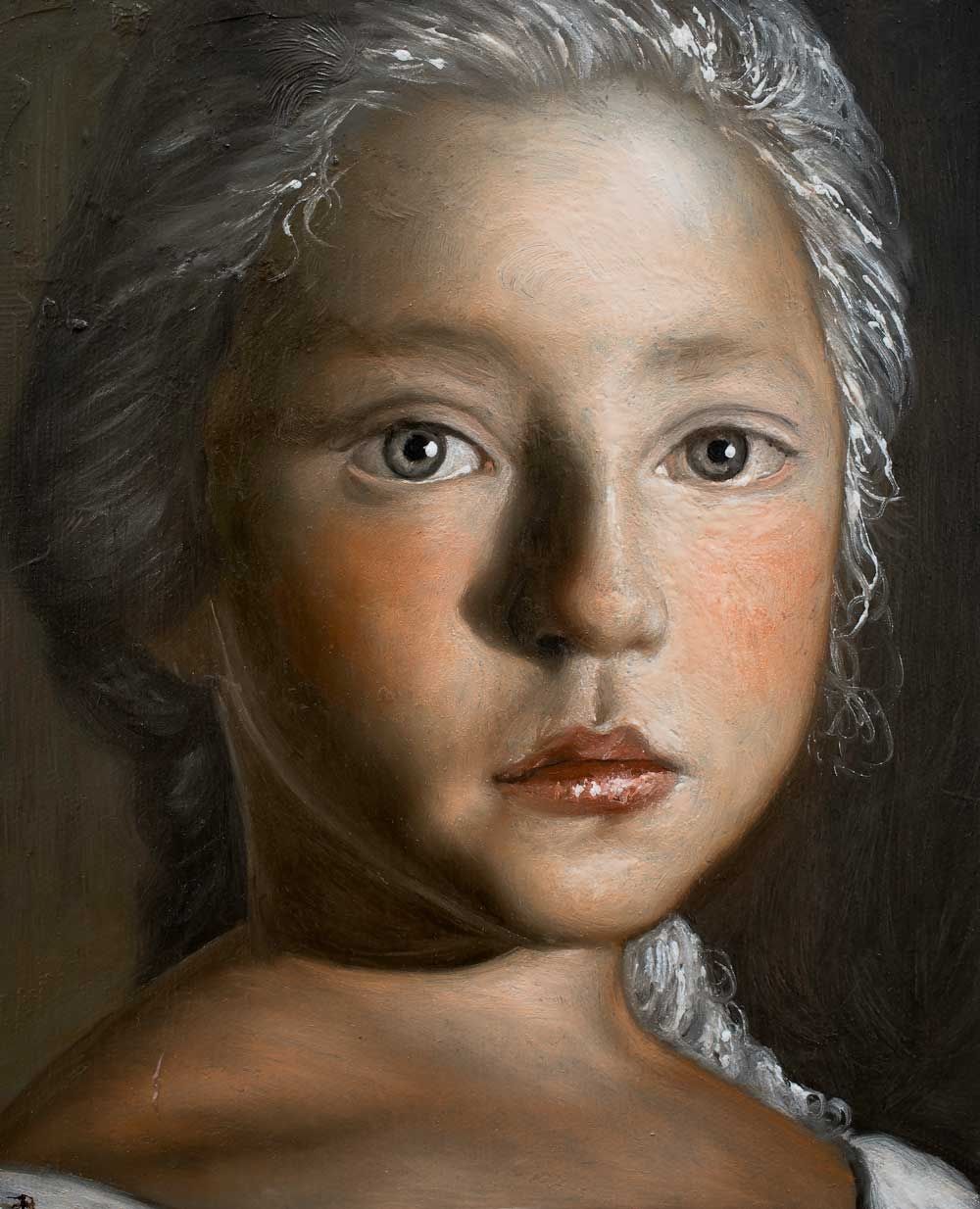
Doña Inés as a Child, oil on Artefex aluminum composite panel, 10 x 6
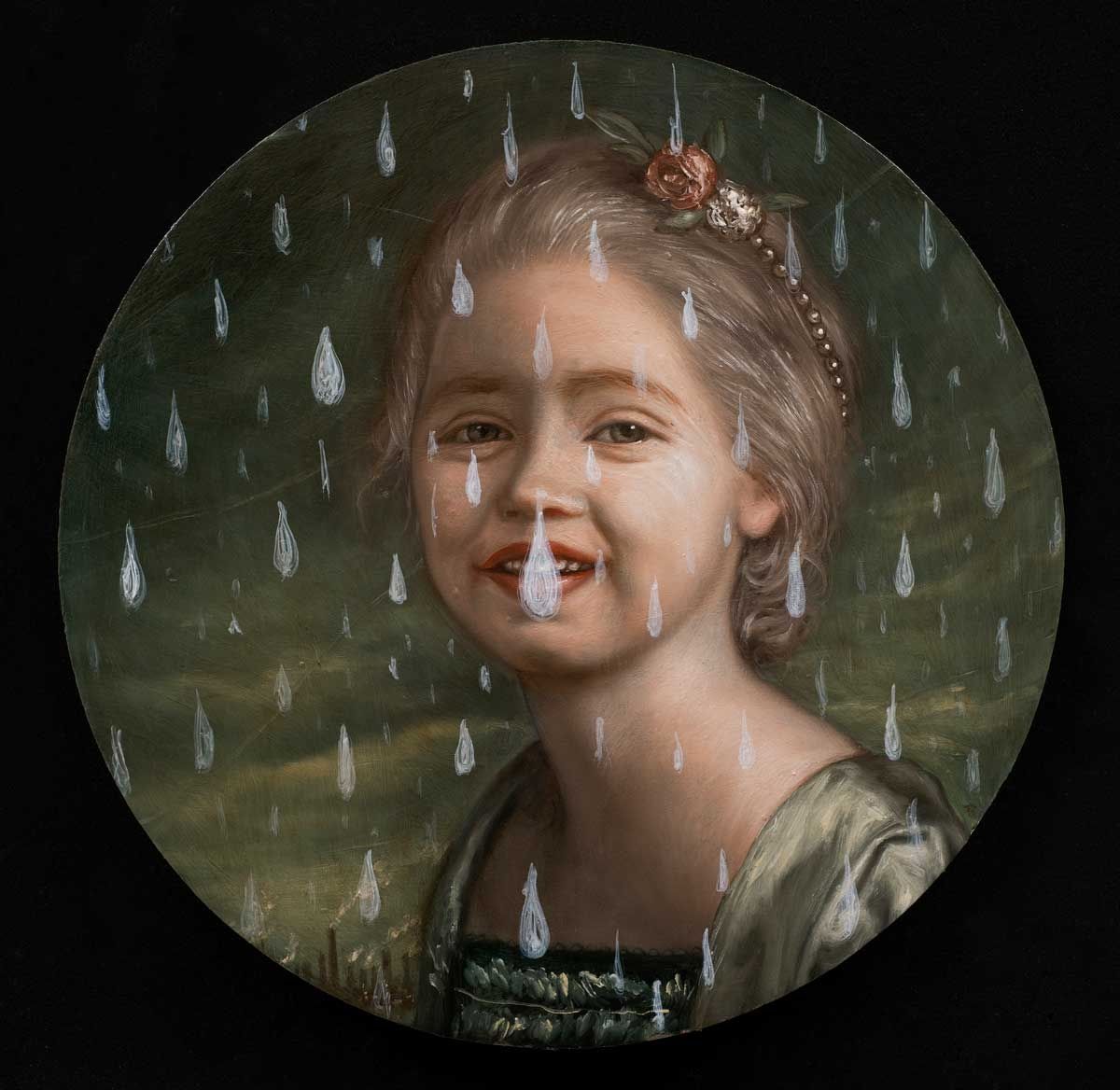
Atomic Portrait of Doña Inés at the Age of Six, oil on wood panel, 18 in. diameter
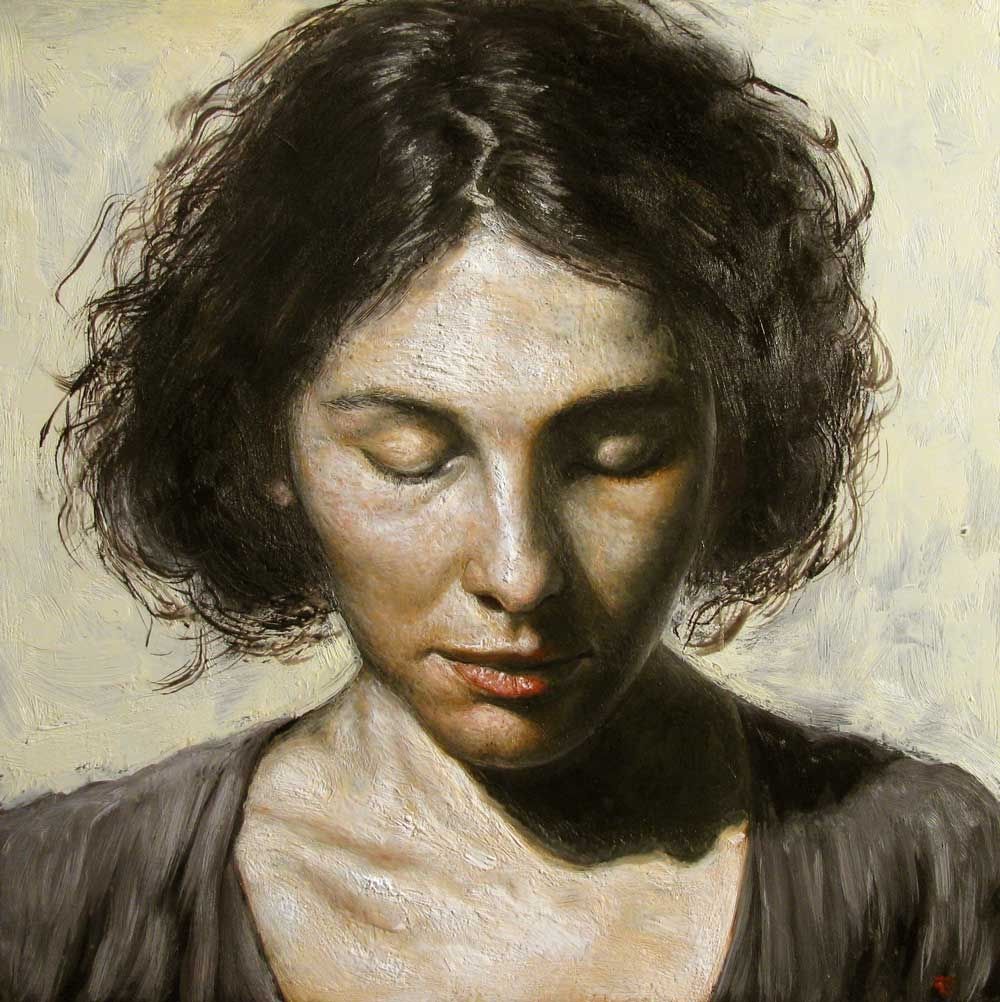
Ages I (Céline), encaustic on cradled wood panel, 16 x 16

Alice, encaustic and Ceracolors on hardboard panel, 16 x 16

